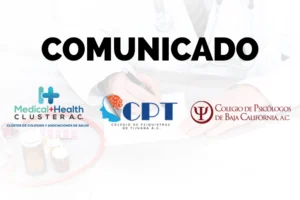En atención a la creciente preocupación sobre la confianza en...
Leer más
Neurologic Complications Rare After COVID-19 Vaccines

Neurologic adverse events after COVID-19 vaccination were rare, an analysis of Vaccine Adverse Event Reporting System (VAERS) data showed.
Of nearly 307 million COVID vaccine doses administered in the U.S. in the first half of 2021, 314,610 (0.1%) people reported any adverse event and 105,214 (0.03%) reported neurologic adverse events, according to Jennifer Frontera, MD, of New York University Grossman School of Medicine in New York City, and co-authors.
The rate of neurologic events after acute SARS-CoV-2 infection was up to 617-fold higher than after COVID vaccination, the researchers reported in Annals of Neurology.
“Overall, the side effects of COVID vaccines were extremely rare and much less common than after COVID itself,” Frontera told MedPage Today.
More neurologic adverse events were seen in people who received the Johnson & Johnson vaccine (0.15%) than the Pfizer-BioNTech (Comirnaty; 0.03%) or Moderna (Spikevax; 0.03%) shots. For the Johnson & Johnson vaccine, the observed-to-expected ratios for Guillain-Barré syndrome (GBS), cerebral venous thrombosis (CVT), and seizures were higher than background rates.
Reports of GBS and CVT after the Johnson & Johnson vaccine emerged last year, but reports of seizure are relatively new, Frontera noted. In the Johnson & Johnson phase III clinical trial, seizures occurred in four participants in the vaccine group, compared with one person in the placebo group.
“People should probably be cognizant of the possibility of seizures after the adenovirus [Johnson & Johnson] vaccine, which is the one new, different thing we see in this report,” Frontera said.
“This is a very well done analysis of neurological symptoms and diagnoses following COVID-19 vaccination,” observed Lyell Jones Jr., MD, of the Mayo Clinic in Rochester, Minnesota, who wasn’t involved with the study.
“These findings confirm previous large population studies, which also found very low rates of neurological adverse events following COVID-19 vaccination,” Jones told MedPage Today. “While VAERS is limited by its passive reporting mechanism, it’s now very clear that neurological complications are much higher following SARS-CoV-2 infection than following COVID-19 vaccination.”
The findings are in line with those seen recently in England, which also showed neurologic complications occurring more frequently after COVID infection than vaccination.
In their analysis, Frontera and co-authors studied VAERS data collected from January 1 to June 14, 2021. They manually reviewed all free-text and coded symptoms reported within 42 days of vaccine administration and grouped them into 36 diagnostic categories.
Adverse events that occurred within 42 days of vaccination for people 12 and older were included, after either one or two COVID vaccine doses. Booster shots were not available during the study period.
“Most side effects were reported on the first day,” Frontera noted. “We included all kinds of side effects, including headache or flu-like symptoms; that’s why there’s a spike on the first day.”
Of all doses administered during the study period, 54% were Pfizer, 42% were Moderna, and 4% were Johnson & Johnson. The median age of patients with reported neurologic adverse events was 50, and 71% were women. The median time to onset of neurologic symptoms from vaccination was 1 day.
Serious events including GBS, acute disseminated encephalomyelitis, transverse myelitis, and CVT were reported in less than 1 per 1,000,000 doses of vaccine administered.
The most commonly reported neurologic adverse events were headache, fatigue, dizziness, syncope, tinnitus, and sleep disorder, all of which were reported more frequently after the Johnson & Johnson shot.
The Johnson & Johnson vaccine had significantly higher reported rates of GBS and CVT than Moderna or Pfizer (all P<0.0004). Compared with pre-COVID background data, the observed-to-expected rate after the Johnson & Johnson shot was 3.06 (95% CI 2.34-3.93) for GBS, 2.01 (95% CI 1.51-2.63) for CVT, and 1.87 (95% CI 1.68-2.08) for seizure.
Overall, compared with studies that reported a composite incidence of all neurologic events acutely after SARS-CoV-2 infection, the rates of events reported after COVID vaccines were 132- to 617-fold lower (0.002-0.008, with 105,214 observed cases and 13,908,927 to 64,941,552 expected cases), Frontera and co-authors said.
The study had several limitations, the researchers acknowledged. VAERS cannot completely capture all potential adverse events, and reporting bias and diagnostic inaccuracy may play a role in some findings, they noted.
Créditos: Comité científico Covid




